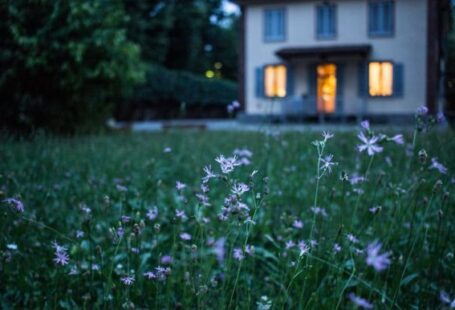Maintaining a beautiful garden and well-kept landscaping requires dedication and effort. Whether you are a seasoned gardener or a beginner, these tips will help you keep your outdoor space looking its best all year round.
Choose the Right Plants
One of the most important factors in maintaining a garden is choosing the right plants. Consider the climate, soil type, and sunlight conditions in your area. Select plants that are well-suited to these conditions to ensure they thrive. This will reduce the need for constant maintenance and make your gardening experience more enjoyable.
Regular Watering
Watering your plants regularly is essential for their growth and health. However, it’s important to strike a balance – overwatering can be just as detrimental as underwatering. Check the moisture levels in the soil before watering and adjust accordingly. A good rule of thumb is to water deeply but infrequently, allowing the soil to dry out between waterings. This encourages the plants to develop deep root systems, making them more resilient during dry spells.
Weeding
Weeds are a common nuisance in any garden. They compete with your plants for nutrients and water, and can quickly take over if left unchecked. Regularly inspect your garden for weeds and remove them promptly. Pull them out by hand or use a garden hoe or trowel to dig them out from the roots. Applying a layer of mulch can also help suppress weed growth by blocking sunlight and preventing weed seeds from germinating.
Pruning and Trimming
Pruning and trimming are important for maintaining the shape and health of your plants. Regularly remove dead or damaged branches to promote new growth. Trim back overgrown shrubs and hedges to maintain their shape and prevent them from encroaching on other plants or structures. Pruning and trimming should be done during the appropriate season for each plant to minimize stress and maximize their potential to bloom.
Mulching
Mulching is a simple yet effective way to improve the health of your garden. Apply a layer of organic mulch, such as wood chips or straw, around the base of your plants. Mulch helps retain moisture in the soil, suppresses weed growth, and regulates soil temperature. It also adds organic matter to the soil as it breaks down, improving its fertility over time.
Fertilizing
Fertilizing provides essential nutrients to your plants, ensuring they grow strong and healthy. Choose a fertilizer that is appropriate for the specific needs of your plants. Follow the instructions on the packaging carefully to avoid over-fertilizing, which can harm your plants. Regularly fertilize during the growing season, typically spring and summer, to support optimal growth and blooming.
Pest and Disease Control
Pests and diseases can wreak havoc on your garden if not addressed promptly. Regularly inspect your plants for signs of infestation or disease. Identify the problem and take appropriate action, whether it’s using organic pest control methods or seeking professional advice. Early detection and intervention are key to preventing the spread of pests and diseases throughout your garden.
Conclusion: A Beautiful Outdoor Space
Maintaining a beautiful garden and landscaping requires time and effort, but the rewards are well worth it. By choosing the right plants, watering properly, weeding regularly, pruning and trimming, mulching, fertilizing, and controlling pests and diseases, you can create a stunning outdoor space that brings joy and tranquility to your life. So roll up your sleeves, grab your gardening tools, and get ready to enjoy the fruits of your labor.





